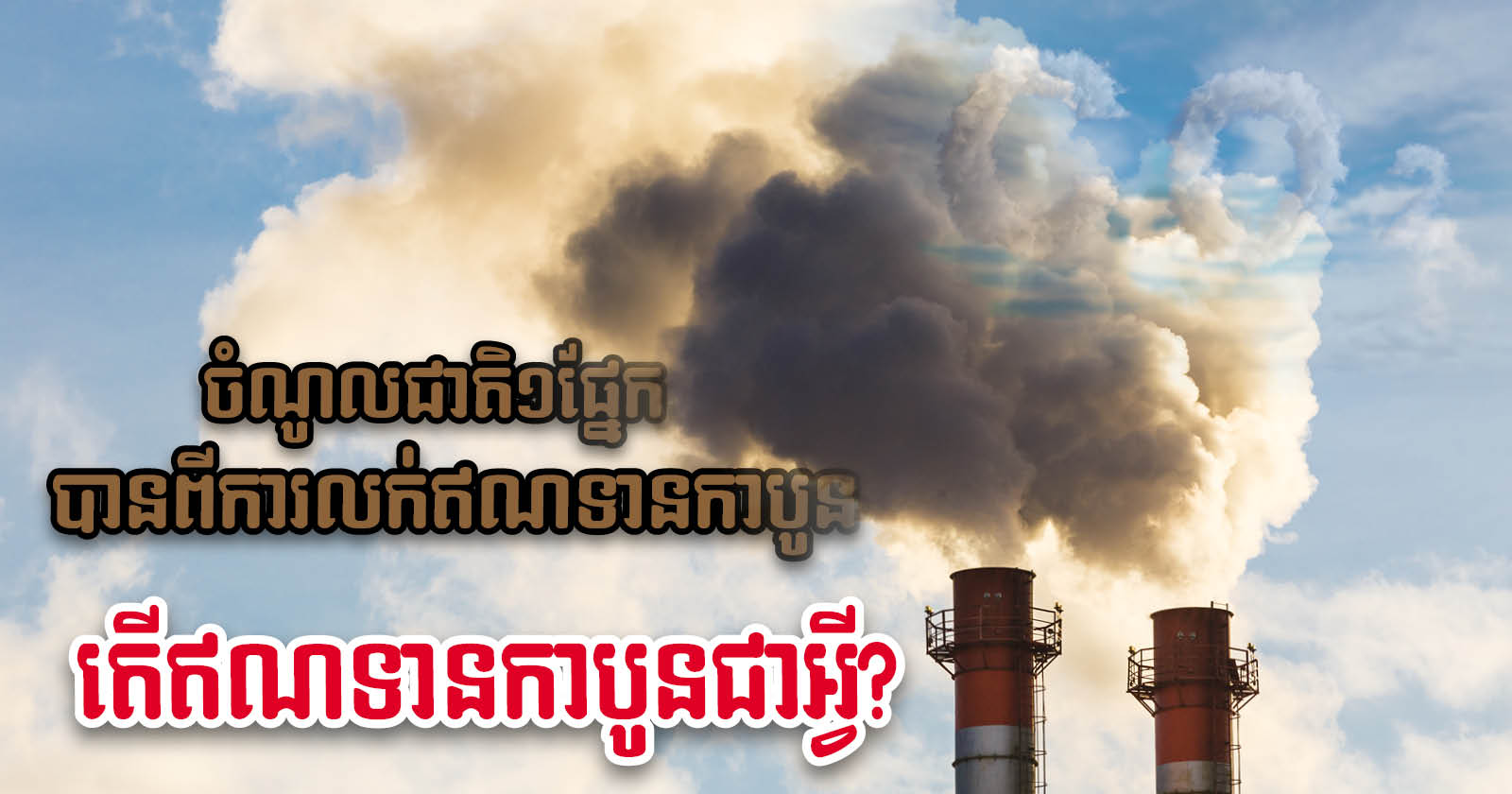Carbon Credits in a Cambodian Context: What to Know & Why it Matters
A carbon credit is similar to a permit where each company has the right to emit greenhouse gas into the environment. Generally, one permit is equal to the right to emit one ton of greenhouse gas (mainly CO2) into the environment.
The number of permits given to each company is determined by the government of each country, and from year to year the government will reduce the amount of credit to protect the environment.
This agreement was created after countries around the world realised the threat of climate change caused by excessive amount of greenhouse gas emission. Given so, each member country has agreed to reduce their emissions, respectively. In fact, Cambodia has also committed to reducing greenhouse gas emissions by 42% by 2030.
Reducing greenhouse gas can be implemented in two simple ways: first, reducing the amount of credit or emission rights of private companies/factories; or second, increasing the number of trees/forests that can absorb greenhouse gas.
Therefore, another definition of carbon credit is the number of newly planted or existing forests that can absorb one ton of greenhouse gas from the environment. For example, country or company A has planted 100,000 hectares of additional forest per year, which can help absorb 10 tons of greenhouse gas from the environment. This means that country or company have 10 carbon credits in hand.
Simply put, one carbon credit can be the right to emit one ton of greenhouse gas or one ton of greenhouse gas that is absorbed by the forest.
Carbon credit can also be traded, which has been thus far done in many forms and different markets depending on the country and the terms of the agreement.
However, generally, there are two major types which are the trade between companies with leftover credits or the purchase from countries with a large amount of green forest.
For instance, Company A and Company B receive 10 units of carbon credit equally from the government, which mean they can emit 10 tons of greenhouse gas (mainly CO2) per year. However, company A’s production is enormous and requires emitting 15 tons of CO2.
Company A has four options:
1. Pay a fine to the government for emitting excess CO2, which is relatively high
2. Develop new production technologies that reduce greenhouse emissions, which generally takes a long time to study
3. Buy carbon credit from Company B, which has leftover credit from their small-scale production or their effective production
4. Buy carbon credit from a country that has plenty of green forests
Most companies will choose the third or fourth option as they are more cost-effective. This mechanism has led many companies to work on new technologies to reduce emissions as much as possible rather than paying every year for extra credits.
In the Cambodia context, there is no regulation yet on the number of carbon credits each company and factory is allowed to have. Thus, the involvement of Cambodia in the carbon credit is the fourth option, a country with plenty of green forests that can be converted to carbon credit for sales.
According to Secretary of State of the Ministry of Environment HE Sao Sopheap, Cambodia participates in four major mechanisms including the Clean Development Mechanism (CDM), REDD +, Joint Crediting Mechanism (JCM) and Voluntary markets.
“Cambodia currently has a natural conservation area of over 7.3 million hectares, or about 41% of Cambodia’s size. From 2016 to 2019, Cambodia has sold approximately US$11.6 million in carbon credits under REDD + program,” said HE Sao Sopheap.
“Under this condition, Cambodia does not require buyers/companies to invest or open factories in Cambodia,” he added.
According to the same source, carbon credits in Cambodia are sold from two projects, namely the Keo Seima Wildlife Sanctuary in Mondulkiri and the Cardamom REDD+ (South Cardamom Mountain National Park and Tatai Wildlife Sanctuary).
Currently, the Ministry of Environment and partners have also been preparing to sell carbon credits in the Prey Lang Wildlife Sanctuary in Stung Treng province.
So far, companies that have bought carbon credits in the voluntary market are Disney, Shell and Gucci. To date, only Cambodia and Indonesia among ASEAN countries have sold carbon credits in this voluntary carbon market.
The UK has also recently expressed interest in buying carbon credits from Cambodia.
However, how does this carbon credit relate to the construction sector?
To date, Cambodia has yet to set any carbon credits regulation for the construction sector, but according to the Ministry of Environment, the Cambodian government has been preparing a sub-decree on greenhouse gas reduction rules and procedures.
This can imply that eventually construction activities that emit greenhouse gas will be controlled. Thus, each construction company should begin researching new technologies that can reduce CO2 emissions as much as possible.
Those who start renovating with new technology today will not have to pay for excessive carbon credit in the near future or will be able to even sell their credit for profit.
- Video Advertisement -



 ខ្មែរ
ខ្មែរ



